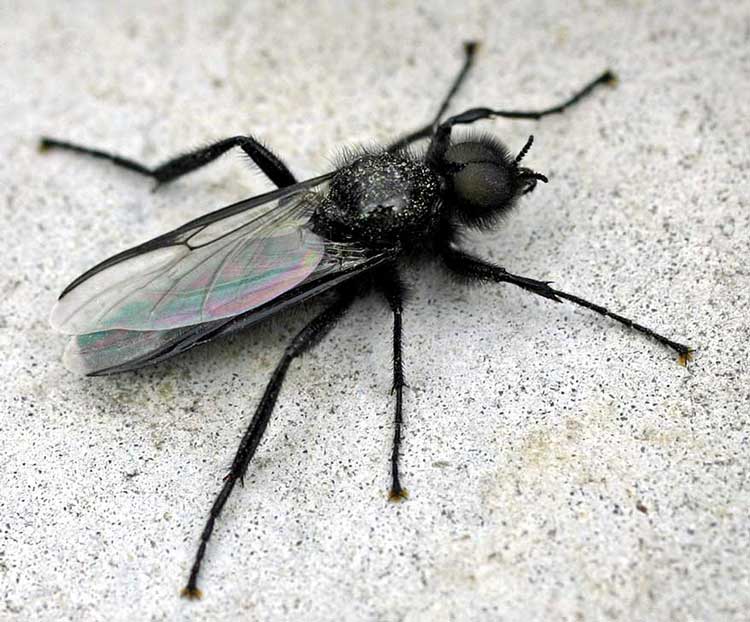
Bibio marci (©Entomart )
Superregnum: Eukaryota
Cladus: Unikonta
Cladus: Opisthokonta
Cladus: Holozoa
Regnum: Animalia
Subregnum: Eumetazoa
Cladus: Bilateria
Cladus: Nephrozoa
Cladus: Protostomia
Cladus: Ecdysozoa
Cladus: Panarthropoda
Phylum: Arthropoda
Subphylum: Hexapoda
Classis: Insecta
Cladus: Dicondylia
Subclassis: Pterygota
Cladus: Metapterygota
Infraclassis: Neoptera
Cladus: Eumetabola
Cladus: Endopterygota
Superordo: Panorpida
Cladus: Antliophora
Ordo: Diptera
Subordo: Nematocera
Infraordo: Bibionomorpha
Superfamilia: Bibionoidea
Familia: Bibionidae
Genus: Bibio
Species: Bibio marci
Name
Bibio marci (Linnaeus, 1758)
References
Global Biodiversity Information Facility. 2019. GBIF Backbone Taxonomy. Checklist dataset. Taxon: Bibio marci. [accessed on 28 June 2020]
Bibio marci or St. Mark's fly or hawthorn fly,[1] is a species of fly from the family Bibionidae. It is found across much of Europe.[2] Their common name comes from the fact that the adults usually emerge around St Mark's Day, 25 April.
Biology
Like most bibionid larvae, they grow up in grassy areas and are herbivores and scavengers feeding on dead vegetation or living plant roots. Bibio marci larvae are known to be root damage pests of celery, asparagus, roses, saxifrages, lawn grass, lettuce and Polyanthus. They also feed on a very large number of plant species that are commercially unimportant.[3]
References
"Hawthorne Fly". California Academy Of Sciences. Retrieved 21 February 2018.
"Bibio marci (Linnaeus, 1758) | Fauna Europaea".
Freeman, Paul; Lane, Richard P. (1985). "Bibionid and Scatopsid flies, Diptera: Bibionidae & Scatopsidae". Handbooks for the identification of British insects. 9 (7). London: Royal Entomological Society of London: 74.
Retrieved from "http://en.wikipedia.org/"
All text is available under the terms of the GNU Free Documentation License

